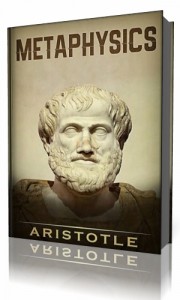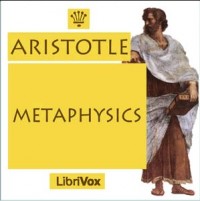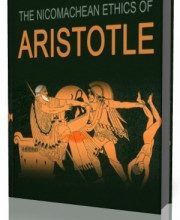Aristotle — Metaphysics ( Read by Geoffrey Edwards, 2011 )

Аннотация:
Metaphysics ( Latin: Metaphysica) is one of the principal works of Aristotle and the first major work of the branch of philosophy with the same name. The principal subject is "being qua being," or being insofar as it is being. It examines what can be asserted about any being insofar as it is and not because of any special qualities it has. Also covered are different kinds of causation, form and matter, the existence of mathematical objects, and a prime-mover God.
The Metaphysics is considered to be one of the greatest philosophical works. Its influence on the Greeks, the Muslim philosophers, the scholastic philosophers and even writers such as Dante, was immense. It is essentially a reconciliation of Plato's theory of Forms that Aristotle acquired at the Academy in Athens, with the view of the world given by common sense and the observations of the natural sciences. According to Plato, the real nature of things is eternal and unchangeable. However, the world we observe around us is constantly and perpetually changing. Aristotle’s genius was to reconcile these two apparently contradictory views of the world.[2] The result is a synthesis of the naturalism of empirical science, and the rationalism of Plato, that informed the Western intellectual tradition for more than a thousand years.[3]
At the heart of the book lie three questions. What is existence, and what sorts of things exist in the world? How can things continue to exist, and yet undergo the change we see about us in the natural world? And how can this world be understood?
By the time Aristotle was writing, the tradition of Greek philosophy was only two hundred years old. It had begun with the efforts of thinkers in the Greek world to theorize about the common structure that underlies the changes we observe in the natural world. Two contrasting theories, those of Heraclitus and Parmenides, were an important influence on both Plato and Aristotle.
Heraclitus argued that things that appear to be permanent are in fact always gradually changing. Therefore, though we believe we are surrounded by a world of things that remain identical through time, this world is really in flux, with no underlying structure or identity. By contrast, Parmenides argued that we can reach certain conclusions by means of reason alone, making no use of the senses. What we acquire through the process of reason is fixed, unchanging and eternal. The world is not made up of a variety of things in constant flux, but of one single Truth or reality. Plato’s theory of forms is a synthesis of these two views. Given, any object that changes is in an imperfect state. Then, the form of each object we see in this world is an imperfect reflection of the perfect form of the object. For example, Plato claimed a chair may take many forms, but in the perfect world there is only one perfect form of chair.
Aristotle encountered the theory of forms when he studied at the Academy, which he joined at the age of about 19 in the 360s B.C.[4] Aristotle soon expanded on the concept of forms in his Metaphysics. He believed that in every change there is something which persists through the change (for example, Socrates), and something else which did not exist before, but comes into existence as a result of the change (musical Socrates). To explain how Socrates comes to be born (since he did not exist before he was born) Aristotle says that it is ‘matter’ (hyle) that underlies the change. The matter has the ‘form’ of Socrates imposed on it to become Socrates himself. Thus all the things around us, all substances, are composites of two radically different things: form and matter. This doctrine is sometimes known as Hylomorphism (from the Greek words for "matter" and "form").
Running Time: 16:03:16
Catalog date: 2011-08-24
Read by: Geoffrey Edwards
Genre(s): Non-fiction, Philosophy, Science
Language: English

Приятного прослушивания.
Загрузка…







